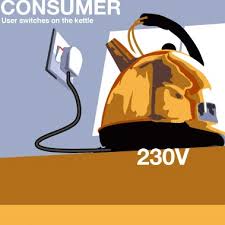Next time you boil the kettle in your kitchen or office, have a think about this: over 90 per cent of the electricity used today is being generated by coal and gas. By 2050, when you do the same thing – make a cuppa – the electricity you use could be generated by over 20 different energy sources and technologies.
That’s a big change.
In some future scenarios we could be looking at an even split between renewable and conventional coal and gas power stations – with some potentially using carbon capture and storage technologies, significantly decreasing our carbon emissions.
“So what,” I hear you say? “As long as I can make that cuppa, right?”
Wrong. What if you had $240 billion dollars to spend to give the electricity sector the makeover it needs to help with the transition to a much more diverse mix of 20 plus energy technologies? This is the challenge facing Australia’s electricity sector today and it has been coined the ‘energy transformation’, a transformation not seen since the industrial revolution.
There are many factors fuelling this transformation; including the take up of photovoltaic (PV) solar panels and the steadily decreasing prices of new low emission technologies, including PV.
Households are becoming energy generators. One in 10 Australian homes now has solar panels installed; totalling 17,354,018 metres squared of PV power generation. This is called distributed generation and poses challenges to the electricity grid because predictable energy demanders (consumers) are suddenly changing their energy consumption behaviour. The electricity grid must learn to operate as a ‘transaction enabler’ for these new generators rather than simply a one way delivery system.
The increasing take-up of PV and other new technologies is driven by dramatic price reductions. PV has halved in price since 2008 and wind farms have increased tenfold in just a decade. The main implication is that renewables are much more commercially viable. The key question now is not whether renewable will ever make up a significant part of our electricity supply, but how will we best manage that transition given they are so different to the existing supply from conventional gas and coal fired power.
Decisions around investment and policy need to be made soon so that by 2050 when we are making that refreshing cup of Earl Grey, we are boiling the kettle using electricity generated from the most cost competitive, low emission energy sources possible.
The future of Australia’s electricity supply and the electricity grid is something CSIRO is exploring through the Future Grid Forum and the Future Grid Research Cluster.
The Future Grid Forum is an Australian first collaboration that brings together the entire electricity sector – over 40 electricity generators, distributors, transmission service providers, retailers, regulators, government, consumer and environment groups – to create a road map for the future of the electricity sector. The Road Map will be released at the end of 2013.
Building on the Forum, in May 2013 CSIRO launched a new $13 million research collaboration, the Future Grid Cluster. Four universities – University of Sydney, University of Newcastle, University of Queensland and University of NSW – will work with CSIRO to develop a suite of tools to understand, develop and optimise energy grids of the future.
So, we have it all in hand I guess. Now, time to make that cuppa.
Dr Luke Reedman is a Senior Research Scientist at the CSIRO. A version of this article was also published on News@CSIRO. Reproduced with permission










